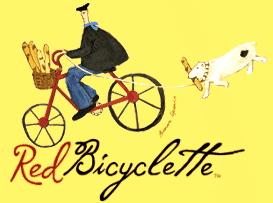In the last Vino 101 post we looked at adulteration, a crude type of wine fraud that is relatively easy to catch. But there is a more subtle and complex kind of fraud, in which the integrity of a prestigious wine is compromised.
If you’ve been to Canal Street in New York, or Tijuana, or pretty much anywhere in China, you’ve seen cheaply made fakes of big-name brands like Fendi and Gucci. Famous wine names like Burgundy and Champagne are essentially brands too — names that, over time, have developed an identifiable style and a reputation for high quality that commands a premium price — and those brands’ reputation rests on producers collectively adopting and enforcing minimum quality and typicity standards.
To be called “Barolo,” for example, a wine must be a particular varietal (100 percent Nebbiolo) produced within the Barolo region in northwest Italy, crop yields must be within a maximum allowable limit, and the finished wine must meet a minimum strength (alcohol content) requirement. The wines are even subject to a final taste test carried out by the Barolo winemakers’ consortium.
Where there’s a valuable brand, there will invariably be enterprising imitators. Sometimes even those who should be working to protect the brand can’t resist the temptation to undermine it. Consider the case of Bordeaux, which by the early 18th century had built a reputation for high quality wine, and was priced accordingly. In the early 19th century, the local producers began to put in place requirements and classification systems to preserve that reputation. Even so, it was an open secret that in less-than-ideal vintages, estates and dealers would fudge a bit by blending some rich, dark wine from warmer, drier areas of France and North Africa into their “Bordeaux.”
After the French government put its authority behind the Appellation d’Origine Controlee (AOC) system, mandating that wine labeled Bordeaux actually had to come from Bordeaux, this practice became less common and more secretive, but the temptation to cheat remained. In 1973, for instance, Chateau Pontet-Canet — a historic estate that fetches over $100 a bottle for its current vintages — was caught blending cheap Rioja into its flagship Bordeaux.
School for Scandal
Similar scandals have cropped up many times since then. Nor is this type of fraud confined to La Belle France. A Napa winemaker was arrested last year on charges that he passed off Merlot and Malbec from California’s central coast as pricey Napa Valley Cabernet. In 2000, Italian authorities uncovered a cache of one million bottles of fake Chianti. And in 2008 a major scandal erupted in Tuscany’s most prestigious wine region, Brunello di Montalcino, famed for its big and ferociously tannic wines.
Brunello is required to be made from 100 percent Sangiovese Grosso grapes, but many winemakers in the region had been cutting in other grapes, usually from other regions. This not only saved them money, it also helped satisfy the tastes of Brunello’s biggest export market, America, which tends to prefer softer, darker, earlier-drinking wines. The Italian press quickly dubbed the scandal “Brunellopoli,” and more than a million liters of Brunello had to be sold as simple table wine at vastly reduced prices.
Perhaps the most audacious, and most telling, of these scandals involved major players in both America and France. In 2005, E&J Gallo, one of the biggest wine companies in America, was looking to create a line of inexpensive wines that would cash in on Americans’ fascination with the South of France. Gallo made a deal with a bulk wine supplier in the Languedoc, France’s southernmost and most prolific wine region, to produce varietal wines that Gallo would market in the U.S. under the label “Red Bicyclette.” From the outset, Pinot Noir was by far the biggest selling varietal in the Red Bicyclette lineup (the movie “Sideways” had been released the year before).
All went swimmingly for several years, until a French bureaucrat noticed that the amount of Pinot Noir being sold under the Red Bicyclette label vastly exceeded the amount of Pinot Noir grown in the entire Languedoc region. An investigation by the French authorities revealed that most of the Red Bicyclette “Pinot Noir” was in fact Merlot and Syrah, and the supplier was tried, convicted, and fined.
Fraud without fanfare
The curious thing about the Red Bicyclette affair is that while the fraud was brazen, it is difficult to say who exactly was harmed. The American consumer certainly wasn’t. As the defense attorney for the French producer noted at the trial, “not a single American complained” about their Pinot Noir tasting wrong.
Gallo wasn’t really harmed; indeed, suspicions were raised that Gallo, which presumably knows its Pinot from its Merlot far better than the consuming public, willingly looked the other way while making millions of dollars. The only ones who suffered were the other Languedoc producers who played by the rules, and the damage to their reputation can’t really be quantified with any certainty.
Is your “Chianti” really Chianti? Unlike the “Reebook” shoes and “Prado” bags on Canal Street, it’s tough to spot the difference.
Next Up: The Art of Forgery
 Mike Healan grew up in a teetotaling family, and had his first taste of booze — a Bartles & Jaymes wine cooler — at age 22. He has spent the years since then making up for lost time. After fifteen years making people miserable as an attorney, he is now doing penance by making people happy in the food and beverage business. When not immersed in the world of wine, he enjoys world travel, staring contests with his dog, and eating copious amounts of cheese. He writes from the SGT East Coast regional headquarters in Boston.
Mike Healan grew up in a teetotaling family, and had his first taste of booze — a Bartles & Jaymes wine cooler — at age 22. He has spent the years since then making up for lost time. After fifteen years making people miserable as an attorney, he is now doing penance by making people happy in the food and beverage business. When not immersed in the world of wine, he enjoys world travel, staring contests with his dog, and eating copious amounts of cheese. He writes from the SGT East Coast regional headquarters in Boston.

